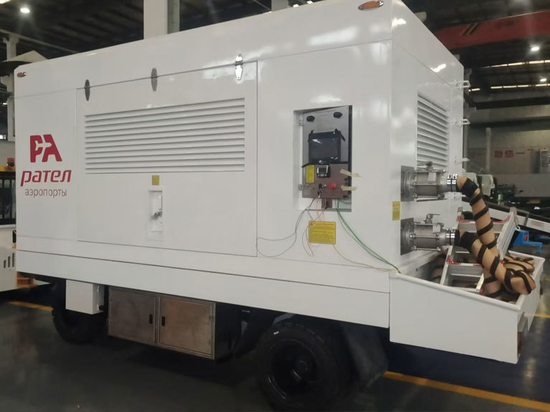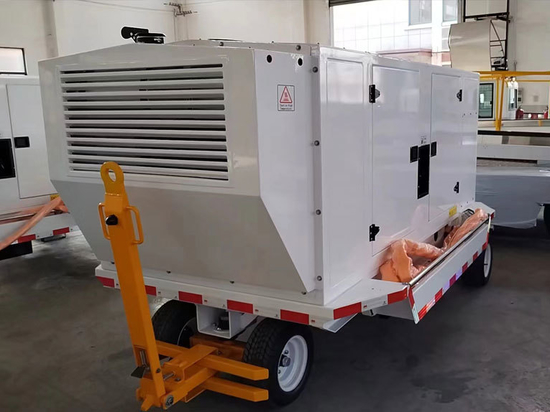
#Industry News
Steps and methods of oil change for aircraft sewage truck (diesel)
Steps and methods of oil change for aircraft sewage truck (diesel)
WTJ5050GWS aircraft sewage truck (diesel) The chassis cab of the product is flat head, single row seat, two-door type, occupant 2 people; The drive type is 4×2, the volume of the clean water tank is 1.3m³, the volume of the sewage tank is 2.5m³, the effective volume of the circulation water tank is 0.2m³, and the flow rate of clean water is 130L/min. The suction sewage flow rate is 600L/min.
Steps and methods of oil change for aircraft sewage truck (diesel)
1) The working platform cylinder is lowered to the lowest level to ensure that the hydraulic oil is discharged from the cylinder, the motor stops running, and then the engine is turned off.
2) Use gasoline to thoroughly clean all pipe joints, pump and motor joints, oil drain plug, oil cover at the top of the tank and oil drain plug at the bottom.
3) Open the oil valve and the oil drain plug at the bottom of the tank so that all the old oil flows into the oil drum containing the waste oil.
4) Open the fuel cover of the oil tank, take out the fuel filter element, and check whether the residual oil at the bottom of the oil tank and its sides and corners contains metal powder or other impurities. Clean the tank thoroughly, first twice with diesel, and then dry the inside of the tank with compressed air. Check whether there is residual sludge, impurities, etc. at the internal corners, until it is cleaned up, and finally rinse it with new oil. (For the part with more small impurities, about 2 kilograms of flour can also be used, the flour is kneeled and divided into three parts to the extent that the surface can be stretched, and the dough is divided into three times to clean the inside of the hydraulic tank, especially the corners of the tank and the filter cartridge.)
5) Remove each oil pipe and thoroughly clean its oil pipe. The steel pipe is cleaned twice with diesel oil, the hose is cleaned twice with cleaning liquid, and then dry with compressed air, and then rinse with new oil. The joints are blocked with nylon plug and cover, or wrapped with plastic cloth for cleaning, to prevent dust, water, etc., from entering and polluting the system.
6) Remove the filter element of all filters in the system. When replacing the filter element, it is necessary to carefully check whether there is metal powder or other impurities on the filter element, so that you can understand the wear of the parts in the system.
7) Discharge the old oil in the main hydraulic pump, each control valve, valve block, and drive motor cavity, and fill with new oil.
8) Install previously disassembled tubing. Before installing the tubing, be sure to clean the pipe joint again and wipe it with silk cloth. It is forbidden to wipe the pipe joint with cotton yarn, towel and other fiber fabrics. The sealing tape should be used when installing the threaded joint and should be pasted in the opposite direction of the rotation of the thread. The fittings should be installed and connected in sequence and according to the specified torque. The sealing ring must be replaced after the tubing is removed.
9) Fill the tank through the fuel filler port. Install the fuel filter element first, then open the new oil drum, use the oil filter to fill the new oil into the tank, fill the oil to the upper limit of the oil mark, and close the fuel cover.




